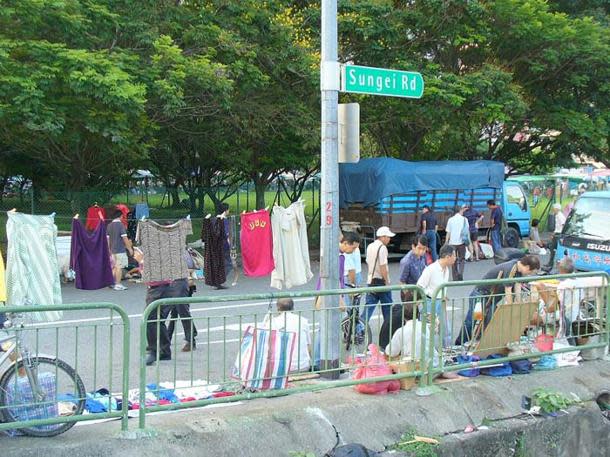Thieves’ Market downsizes to make way for MRT station
By Lisa-Ann Lee
One of the most famous flea markets in the world, Paris' Les Puces de Saint-Ouen, known popularly as Les Puces (or The Fleas), receives up to 180,000 visitors every weekend. Located at Porte de Clignancourt, it covers seven hectares and is a veritable treasure trove for antique trawlers and bargain hunters. Across the Channel, London's flea markets are equally popular with locals and tourists alike, with the ones at Camden, Portobello, Notting Hill and Covent Garden practically being institutions in their own right.
What does this have to do with Singapore? From 25 July, the 'Thieves' Market', Singapore's oldest flea market, will be reduced in size to make way for the construction of the new Sungei Road MRT station. Around since the 1930s, the market supposedly began life as a place where stolen loot from the homes of affluent European families living in the area would turn up, hence its name. Today, it continues to have a certain piratical air about it, with its haphazard displays of junk and curios and its somewhat unsavory appearance — a marked contrast to the rest of the country's clean, airbrushed façade.
Originally encompassing Pasar Lane, Pitt Street and Larut Road, it will now be confined to half its original area with the closure of Pasar Lane and certain sections of Pitt Street. In addition, the authorities have efficiently drawn out three hundred 1m-by-1m lots for the stallholders, meaning that they will no longer have the luxury of spreading out their goods around them, one of the most enduring images of the market.
The future of the market also appears to be uncertain and it is not clear if the stalls will be allowed to continue occupying the area once construction on the MRT is completed in 2017. According to the National Environmental Agency (NEA), the area is not meant to be a permanent one for business activity. It was also revealed in a report by The Straits Times that the agency has already referred some of these vendors to the Central Community Development Council so they can get help finding jobs or upgrading their skills.
However is skills training really the solution to this issue? Why not move the market to another location and allow the vendors to continue what they are doing?
Or does the market have to go because it doesn't fit in with the modern, world-class image that Singapore wants to build for itself? If so, it wouldn't be the first time that this is happening. Singapore has long had a love-hate relationship with its humble origins. In their haste to showcase the country as a progressive, first-world nation, the authorities demolished many old buildings to make way for its shiny skyscrapers. Indeed, as former Minister Mentor Lee Kuan Yew has acknowledged: "In our rush to rebuild Singapore, we knocked down many old and quaint Singapore buildings. Then we realised we were destroying a valuable part of our cultural heritage... we were demolishing what tourists found attractive and unique in Singapore."
Singapore's cultural heritage is not limited to old buildings alone. With its colourful history and local flavor, the Thieves' Market could very well be a genuine attraction for tourists looking for something other than the air-conditioned malls along Orchard Road. Some people have argued that the market looks unsightly but it's nothing that a good sprucing up can't fix. Given a choice between closing their stalls permanently and tidying up their acts, most vendors would, in all probability, choose the latter.
So what is to be the fate of Thieves Market and, more to the point, do Singaporeans want to wait till 2017 to find out?
For the most authoritative and comprehensive listing of properties for sale or rent, go to www.iProperty.com.sg For more property news, real estate reports and celebrity home features, head to www.iproperty.com.sg/resources.


